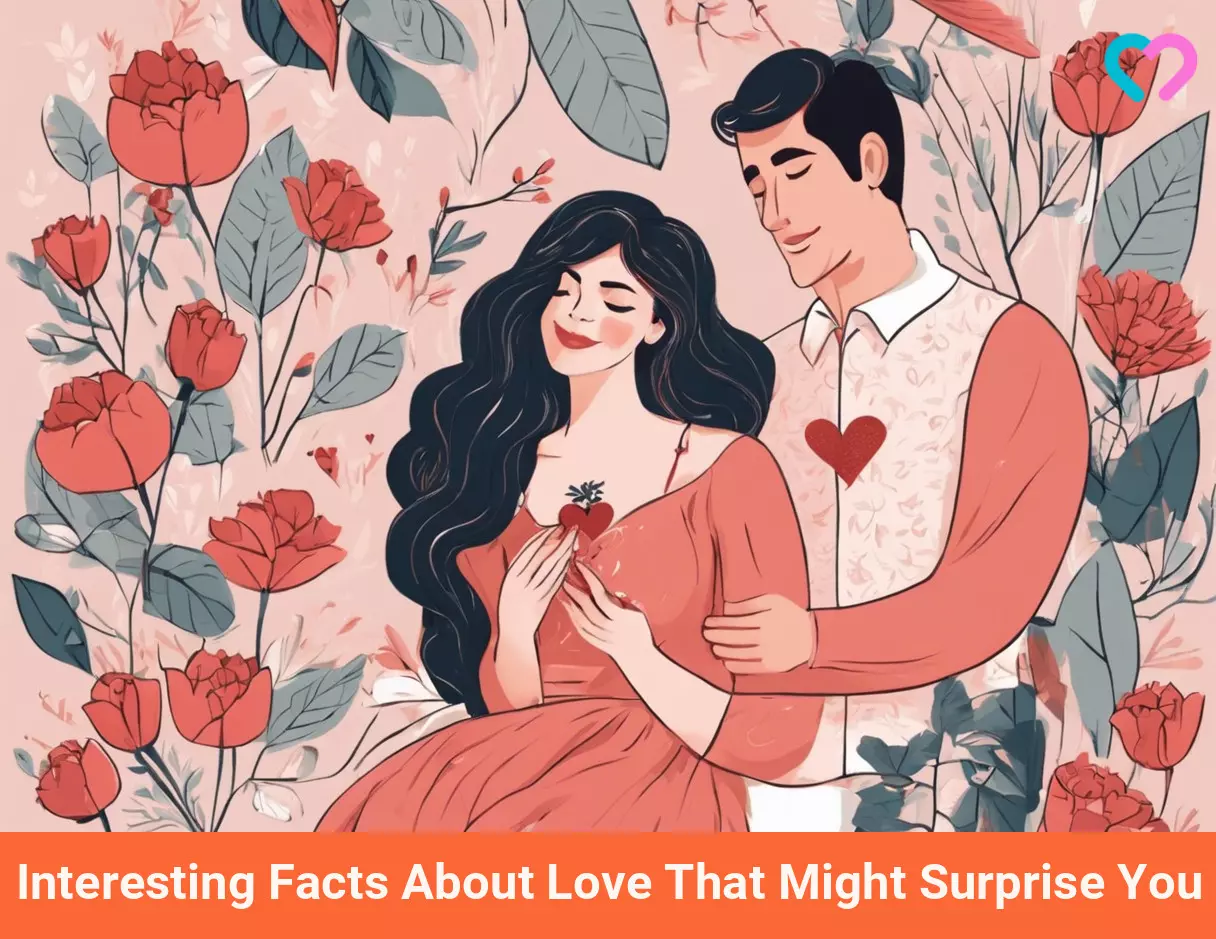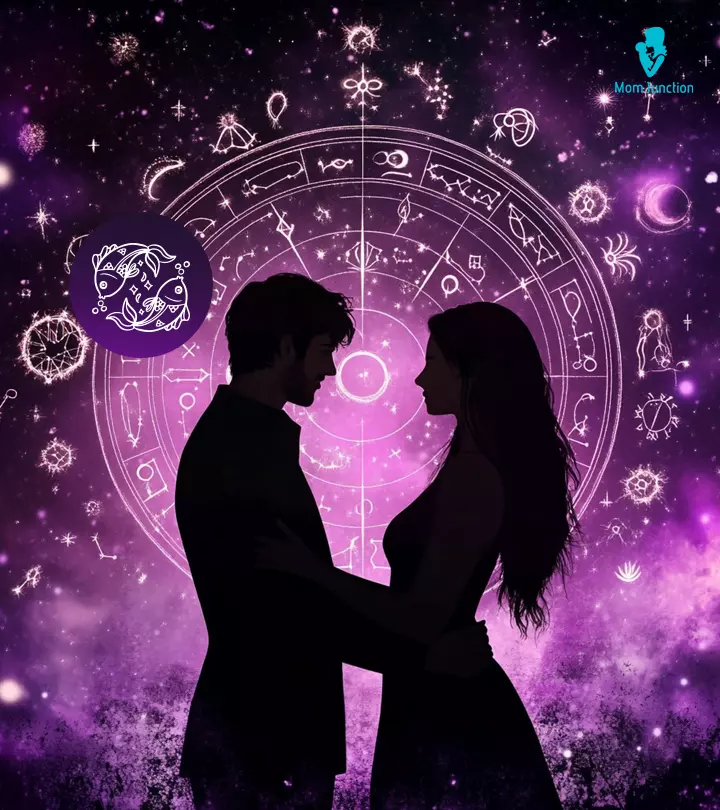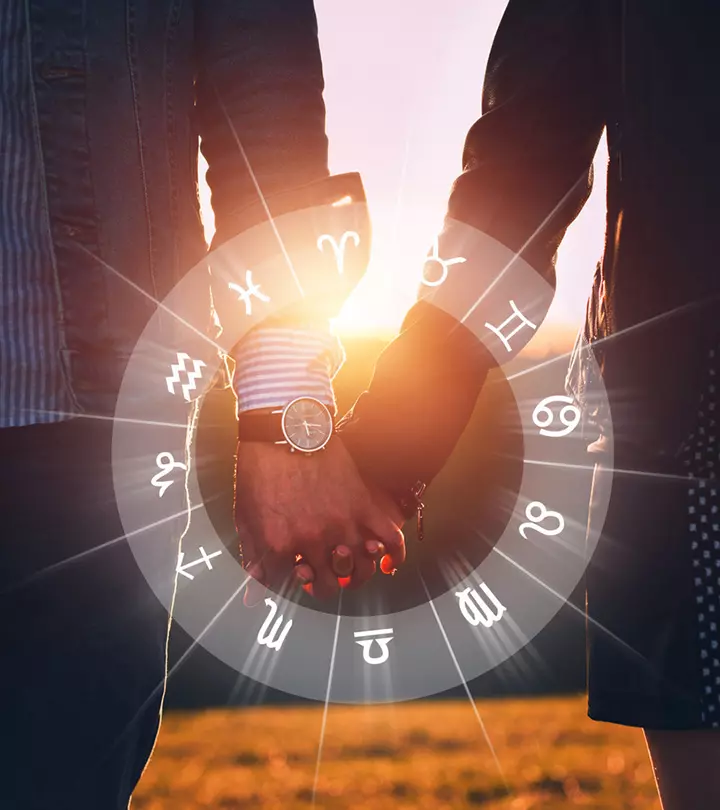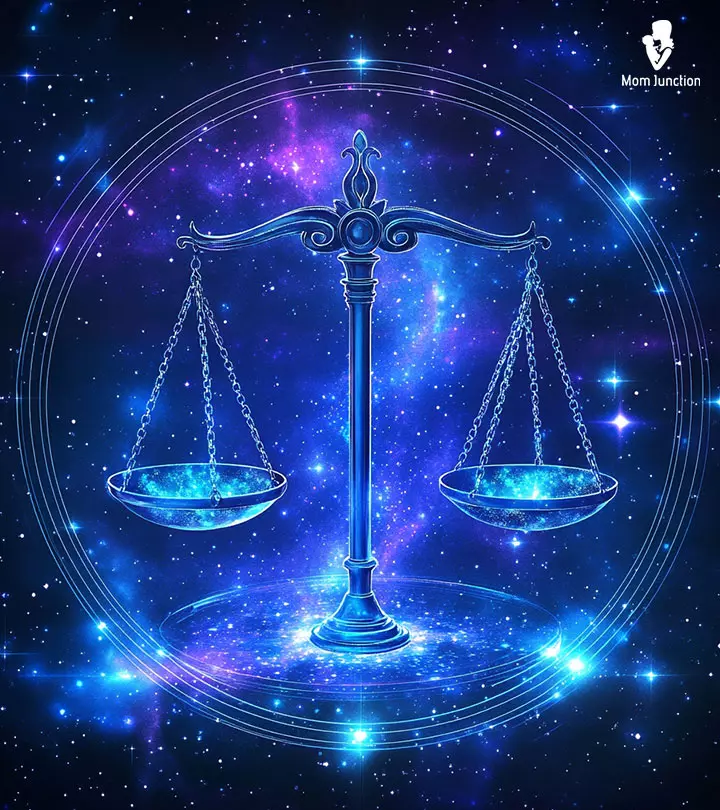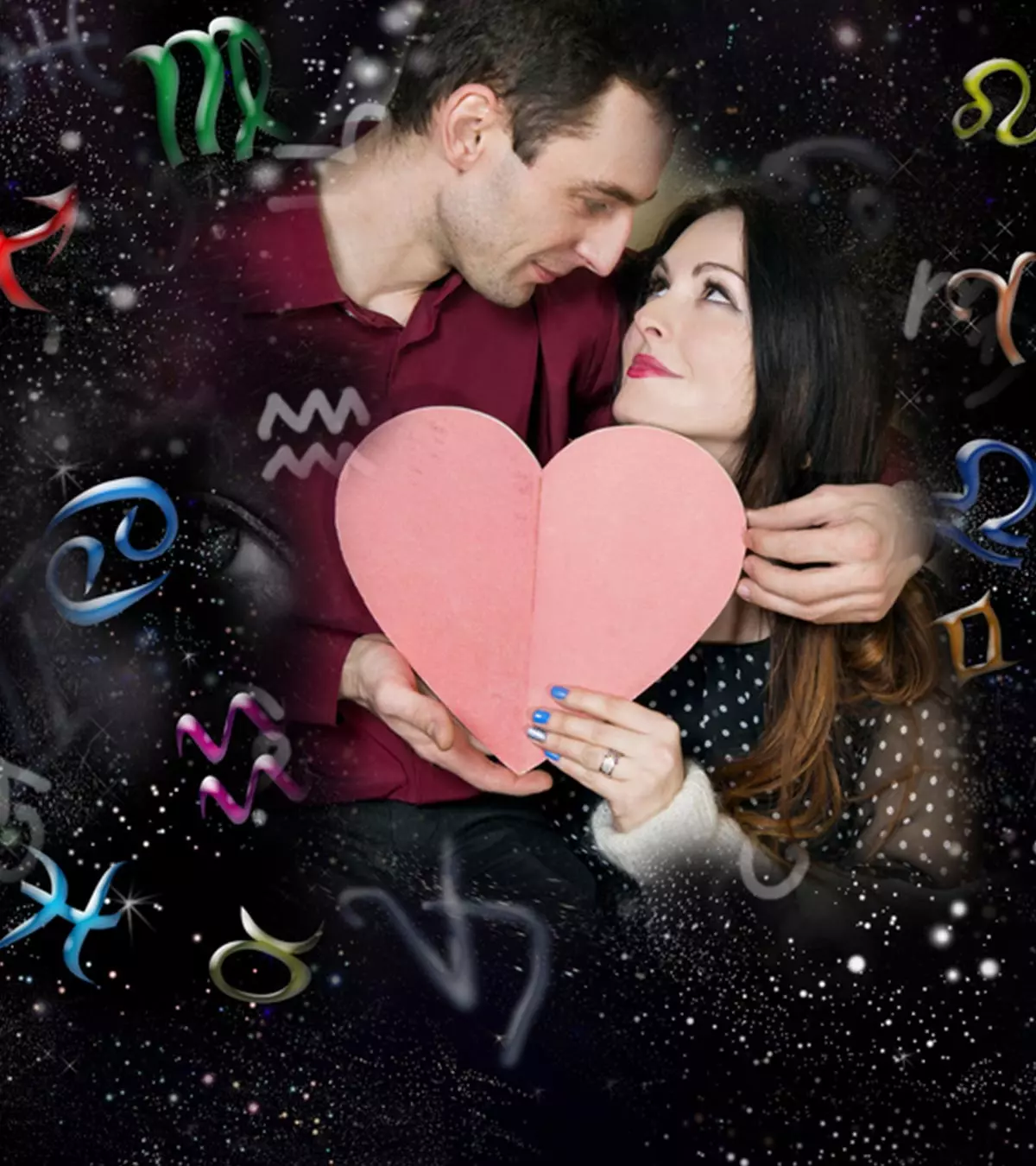

Image: Shutterstock
Love is a divine feeling and topic of discussion all through the history of humankind. If you are curious to know facts about love, you are at the right place. Love has been interpreted and defined by poets, psychologists, biologists, philosophers, among others. However, as new studies and research keep surfacing on a daily basis, the perceptions and definitions of love have changed drastically over the years. According to studies, falling in love has neurological effects like cocaine. This post brings you some astonishing love facts. Read on.
20 Science-based Facts About Love
1. Love and lust: The difference lies in the eyes of the beholder.
You may think that your heart knows the best. However, love is not a precondition for sexual desire, and sexual desire may not always lead to love.
A study has shown that the pattern of eye gaze can reveal the difference between love and lust (sexual desire). As per the study, the eye gaze shifts based on the person’s goal—the feeling of love leads to more frequent eye fixations on the face than on the body, whereas in lust, the eye fixation is more profound on the body than on the face (1).
Yes, the eyes do reveal your intentions and interests.
2. Love acts like a drug.
Image: Shutterstock
Passionate love creates feelings of euphoria and exhilaration. Interestingly, the areas of the brain that are activated by these romantic feelings largely overlap the areas that are associated with reward, desire, addiction, and euphoric states. Romantic love and use of opioid drugsiA category of painkillers that interact with opioid receptors in the body to relieve pain , such as cocaine, trigger similar regions in the brain, releasing oxytociniThe hormone that also acts as a chemical messenger and regulates various body functions and human interactions and behavior , vasopressiniA hormone and neurotransmitter involved in the electrolyte–water balance, social bonding, and stress response , and dopamineiA chemical that transport messages among nerve cells and also acts as a hormone that induces happiness and motivation , which put one in a “feel-good” or “happy” state (2).
3. Hugging your partner can lead to less stress and a healthier heart.
Hugging a partner or spouse can lower blood pressure and increase oxytocin levels in premenopausal women (3).
Oxytocin hormone is known to have anti-stress properties and promote healing and well-being (4).
Rachel Boulos, a blogger, describes the positive impact of hugging her husband on her mood. She explains, “When I am feeling moody, irritable, or just plain sad, my husband will say ‘do you need a 30-second hug?’ After 30 seconds (which is like an eternity in hug time), I notice that I physically and emotionally feel better (i).”
4. A loving relationship means a healthy heart.
Being in a relationship or being married has its perks. A study of 3.5 million people has revealed that people who are married have lower rates of cardiovascular diseases when compared with people who are single, divorced, or widowed (5). In individuals aged 50 years and below, marriage is associated with 12% lower odds of any vascular disease (5).
5. Lovers’ hearts beat in sync.
Image: Shutterstock
“My heart beats for you…” Do you say that to your partner often? Scientifically, you may not be wrong.
According to a study conducted by researchers at the University of California, lovers’ hearts beat at the same rate. The study revealed that the heart rate and respiration rate of couples who are in a romantic relationship synchronize when they sit facing each other for around three minutes (6), (7). Interestingly, when the pairs are mixed, no syncing is observed.
6. Love can reduce your pain.
Love can act as a painkiller. Surprised? Well, when people are in love, their moods change and also their experiences with pain. A study conducted by the Stanford University School of Medicine shows that passionate, intense love and ardor can relieve pain similar to that of the painkillers or illicit drugs such as cocaine (8).
7. Long-term commitment and memory have a strong connection.
Do you remember every aspect of your relationship—how it moved forward, and what the important milestones were?
A study has reported that committed couples remember their relationship history, including the things that happened during each stage of their relationship more accurately than those couples in a strained relationship (9). The study says that the couples in the second group often choose to misremember things to avoid disappointment.
8. Distance makes the heart grow fonder.
You may have often heard that long-distance relationships do not work out. However, there is a study that presents a different picture. The study has revealed that long-distance relationships are not only successful, but also help in developing trust, fondness, and satisfaction between partners (10).
9. Couples start to look alike in appearance.
Opposites may not always attract. You may have noticed that some couples do look alike. Interestingly, a group of researchers from the University of Michigan found that couples grow to look more like each other after a certain period (around 25 years) (11). The happier the couple, the closer the similarity in their physical appearance.
This may happen because couples who stay together and have unity tend to mimic each other’s facial expressions and behavior. So, if your partner has a good sense of humor or laughs often, you will probably start doing so too.
10. Men fall in love faster than women.
Image: IStock
It is a general misconception that women are more romantic and fall in love faster than men.
A study of 172 college students has shown that men fall in love sooner and say, “I love you” faster than women (12).
11. Romantic relationships can change your behavior.
Love and affection have the power to change the behavior of partners in a relationship. According to a study that was carried out on 245 young couples for nine months, it was observed that being in a relationship and experiencing romance decreased neuroticism and brought about a positive change in the personality of young couples (13). Perhaps the partners became optimistic and self-confident because of the positive emotions experienced in a relationship.
12. Laughter is the best medicine for love.
Do you and your partner crack up at each other’s jokes or laugh while watching comedy movies or series? This shared laughter and rapture can lead to more intimacy between the two of you.
The results of a study of 71 romantic couples have indicated that laughing or cracking up together is associated with closeness. Couples are more supportive, show compassion for each other, and are satisfied and happy in their relationship when they laugh together (14).
13. Love has healing powers.
When people say love and time can heal all wounds, they may not be wrong.
Researchers have observed an association between psychological distressiUnpleasant and overwhelming feelings commonly triggered by mood disorders such as anxiety or depression and wound healing.
A study of 42 married couples, aged between 22 and 77 years has shown that wound healing is slower in couples with marital discord. In addition, it has shown that couples who are more hostile heal slower than couples who are less hostile and show endearment for each other (15).
14. Love hormone is what you need for headaches.
A group of researchers has shown that the use of intranasal oxytocin or “love hormone” spray can help alleviate migraine headaches. Moreover, this analgesic effectiRelated to medicines or drugs that alleviate pain is shown to be stronger in patients with chronic migraine (16).
Results of the study showed that about half of the participants reported their headache reduced by half after four hours, with an additional 27 percent reporting no headache at all during the same duration.
15. Like the moon, love has phases.
Image: Shutterstock
Researchers from Harvard have shown that like the moon, love also develops in phases. The early phase of love is quite different from its later phase. It starts with obsession and intense adoration (serotonin levels are high at this time) but then cements into a relationship or a more mature form of love (oxytocin levels are high at this time) (17).
16. Love and lust activate different regions in the brain.
Researchers believe that lust and love involve different intentions, goals, and interests. Now, brain imaging studies have made it possible to map out the regions of the brain that are responsible for love and lust.
A study reveals that love and lust activate different areas of the striatum (a part of the brain structure). The area activated by lust is the same area that is usually activated by pleasurable things, such as sex or food. On the other hand, the area activated by love is associated with reward or pleasure and is also the same region that is associated with drug addiction (18).
17. Kissing can help you choose the right partner.
You may think that kissing is a way to show your love and caring nature to your partner. However, it can do more important things, including helping you to choose the right partner.
A study on the potential effects of romantic kissing reported that kissing helped men and women determine their compatibility with a partner. Moreover, the frequency of kissing was associated with the quality of the relationship (19).
18. Love does happen at first sight.
A study has shown that people could reject or pursue romantic relationships with someone just by looking at them. As per the study, although this judgment is formed within seconds of seeing a potential partner, it also depends on determining physical and psychological compatibility (20).
19. Music can make or break a date.
Image: IStock
Can music help you on your date night? The answer is yes. According to a report published in Psychology of Music, the feelings of interest, admiration, and attraction in single men and women increase when music is playing in the background during their first meeting compared to when there is no music (21).
20. A broken heart is for real.
Did you know people can suffer from broken heart syndrome? According to the American Heart Association, broken heart syndrome, also called stress-induced cardiomyopathy or takotsubo cardiomyopathy, can occur in healthy individuals too (22).
It is characterized by sudden, intense chest pain due to an increase in the levels of the stress hormones. This condition is sometimes mistaken as a heart attack. It can occur due to various factors, including the death of a loved one, divorce, breakup or physical separation, and betrayal or romantic rejection (22).
21. Lovesickness is also a real thing.
Being lovesick is also an illness with symptoms and remedies. Lovesickness happens in two conditions: when a person yearns for their love interest who has been separated and when a person starts seeing someone new. In both situations, the stress hormone cortisol is released, making the person feel sick. According to research, lovesickness is a disorder characterized by symptoms such as headaches, fever, palpitations, loss of appetite, and agitation (23). It is mainly cured when the romantic interest returns to the person or when they become comfortable with their new love interest.
22. Roses are indeed a symbol of love.
Ever wondered how roses became the symbol of love? There is a mythological connection to it. As per Greek legends, the name rose is an anagram created by the Goddess of beauty, Aphrodite, who dedicated the flower to her son Eros, the God of love. To protect God’s frailty, Eros bribed the deity of silence, Harpocrates, with a rose. Since then, the rose has become a symbol of love, secrecy, and silence (24).
Frequently Asked Questions
1. What is the strongest form of love?
Unconditional love may be considered the strongest form of love where nothing is expected in return. Forgiveness may also be considered a strong form of love.
2. What are the three stages of love?
The three stages of love may be lust or infatuation, attraction and building trust, and finally, attachment or developing loyalty.
3. How soon is too soon to say ‘I love you?’
It is important to know each other before deciding to commit. It may take at least three to five months to explore each other and identify compatibility. Saying ‘I love you’ before that may be too soon.
4. How do people deal with heartbreak and loss of love?
The first step in dealing with heartbreak is acknowledging and giving respect to your feelings and allowing yourself some space and time to grieve. Talking to a friend, family, or a professional therapist, focusing on personal growth, engaging in healthy coping mechanisms and self-care, and participating in activities that keep you busy or enjoying can help.
These intriguing facts about love show how this sentiment can change our lives. Love is as effective in producing euphoria as some addictive drugs that trigger the brain to release ‘happy hormones.’ Love in the form of hugs and kisses is a stress buster and can extend your life by improving your heart health. No doubt, research around love is often sensationalized. The bonding of passionate love and devotion can change your behavior, make your hearts beat in sync, and even develop similarities in appearance. Although hormones play a crucial role in your perception of love, how long-lasting and loving your love story will be, depends on your choices.
Infographic: Intriguing Science-Based Facts About Love
While some people may perceive love as fictional and imaginary, many would not know there are scientific research-backed facts about love. Want to know what they are? Then read through this infographic to learn some astonishing facts about love that could help you comprehend this feeling better. Illustration: Momjunction Design Team
Key Pointers
- When you hug the person you love, it acts as a stressbuster.
- Unlike the common misconception that women are more emotional, men tend to fall in love much faster.
- Laughing together keeps your relationship healthy and helps you maintain the bond.
Illustration: Interesting Facts About Love That Might Surprise You
Image: Stable Diffusion/MomJunction Design Team
Personal Experience: Source
MomJunction articles include first-hand experiences to provide you with better insights through real-life narratives. Here are the sources of personal accounts referenced in this article.
i. Little moments of marriage: 8 ways to stay connected to your spouse.https://livewellworryless.com/2015/06/22/little-moments-of-marriage-8-ways-to-stay-connected-to-your-spouse/
References
1. Bolmont, M., Cacioppo, J. T., & Cacioppo, S; Love is in the gaze: an eye-tracking study of love and sexual desire; Psychological Science (2014).
2. Zeki, S; The neurobiology of love; FEBS Letters, 581(14) (2007).
3. Light, K. C., Grewen, K. M., & Amico, J. A; More frequent partner hugs and higher oxytocin levels are linked to lower blood pressure and heart rate in premenopausal women; Biological Psychology (2005).
4. Uvnas-Moberg, K., & Petersson, M; Oxytocin, a mediator of anti-stress, well-being, social interaction, growth and healing; Z Psychosom Med Psychother (2005).
5. Marriage Linked to Lower Heart Risks in Study of 3.5+ Million Adults; American College of Cardiology
6. Helm, J. L., Sbarra, D., & Ferrer, E; Assessing cross-partner associations in physiological responses via coupled oscillator models; Emotion (2012).
7. Ferrer, E., & Helm, J. L; Dynamical systems modeling of physiological coregulation in dyadic interactions; International Journal of Psychophysiology (2013).
8. Love takes up where pain leaves off, brain study shows; Stanford Medicine
9. Ogolsky, B. G., & Surra, C. A; A comparison of concurrent and retrospective trajectories of commitment to wed; Personal Relationships (2014).
10. Crystal Jiang, L., & Hancock, J. T; Absence makes the communication grow fonder: Geographic separation, interpersonal media, and intimacy in dating relationships; Journal of Communication (2013).
11. Zajonc, R. B., et al.; Convergence in the physical appearance of spouses; Motivation and Emotion (1987).
12. Harrison, M. A., & Shortall, J. C; Women and Men in Love: Who Really Feels it and Says it First?; The Journal of Social Psychology (2011).
13. Finn, C., Mitte, K., & Neyer, F. J; Recent decreases in specific interpretation biases predict decreases in neuroticism: Evidence from a longitudinal study with young adult couples; Journal of Personality (2015).
14. Kurtz, L. E., & Algoe, S. B; Putting laughter in context: Shared laughter as behavioral indicator of relationship well‐being; Personal Relationships (2015).
15. Kiecolt-Glaser, J. K., et al.; Hostile marital interactions, proinflammatory cytokine production, and wound healing; Archives of General Psychiatry (2005).
16. Tzabazis, A., et al.; Oxytocin and Migraine Headache; HEADACHE: The Journal of Head and Face Pain, (2017).
17. Powell, A; When love and science double date; Harvard Gazette (2018).
18. I want to know where love is: Concordia University
19. Wlodarski, R., & Dunbar, R. I; Examining the Possible Functions of Kissing in Romantic Relationships; Archives of Sexual Behavior (2013).
20. Cooper, J. C., et al.; Dorsomedial Prefrontal Cortex Mediates Rapid Evaluations Predicting the Outcome of Romantic Interactions; Journal of Neuroscience (2012).
21. Shigeno, S; Effects of background music on young Japanese adults’ impressions of opposite-sex conversation partners; Psychology of Music (2015).
22. Is Broken Heart Syndrome Real?; American Heart Association
23. Arrhythmias in the History: Lovesickness; National Library of Medicine.
24. Rose: A Brief History; Integrated Pest Management, University of Missouri.
Community Experiences
Join the conversation and become a part of our nurturing community! Share your stories, experiences, and insights to connect with fellow parents.
Read full bio of Dr. Carlos Juan Carmona-Goyena
Read full bio of sanjana lagudu
Read full bio of Shikha Thakur
Read full bio of Ratika Pai











